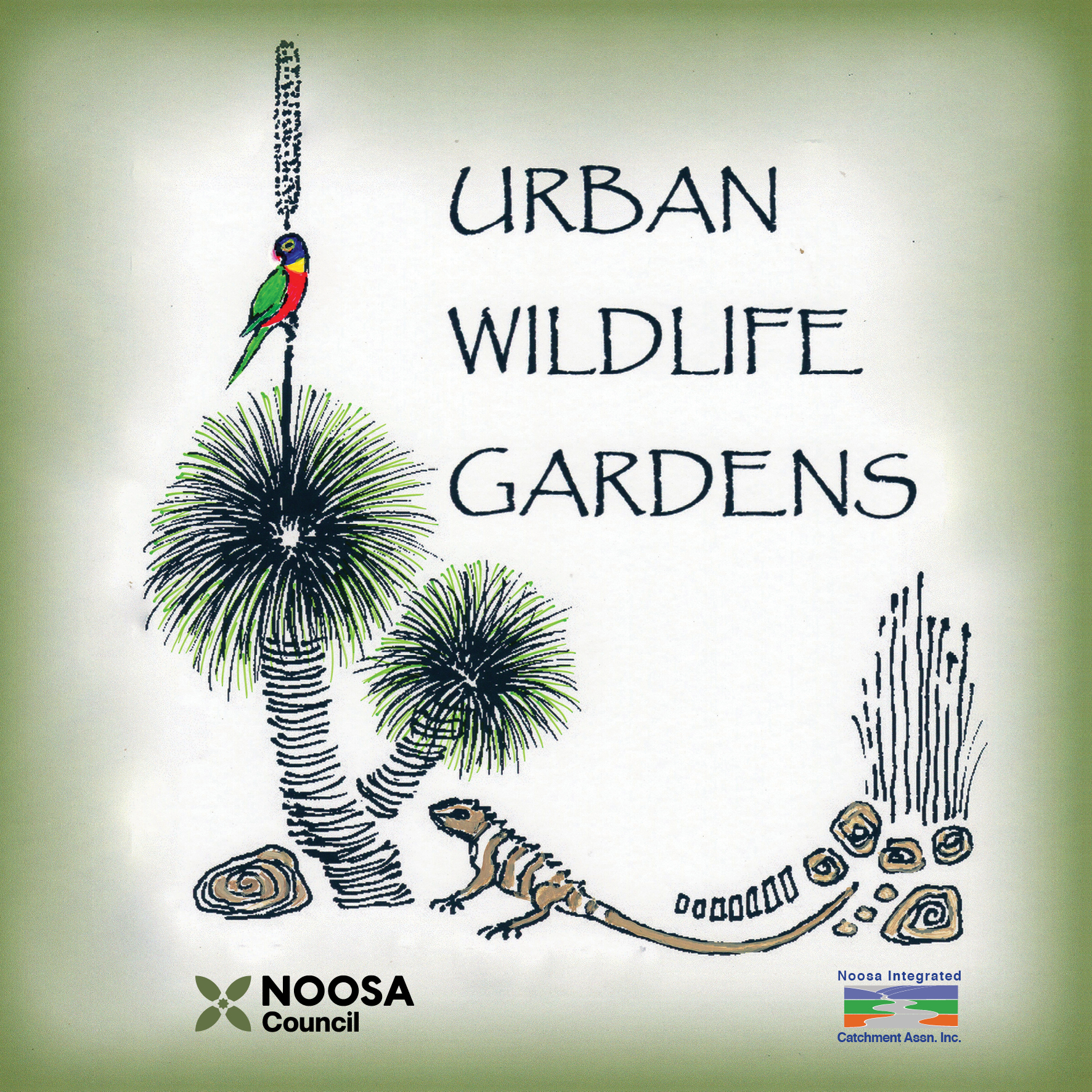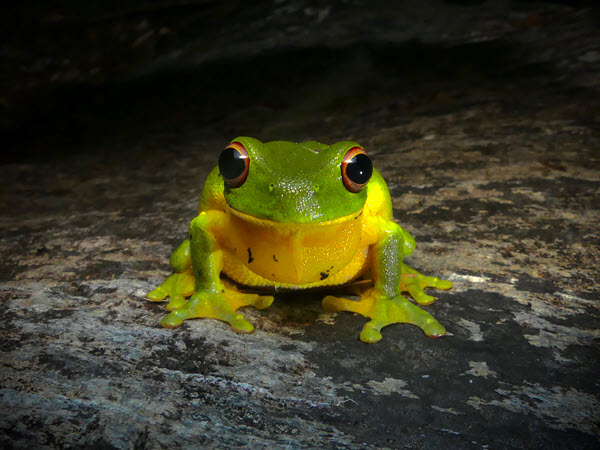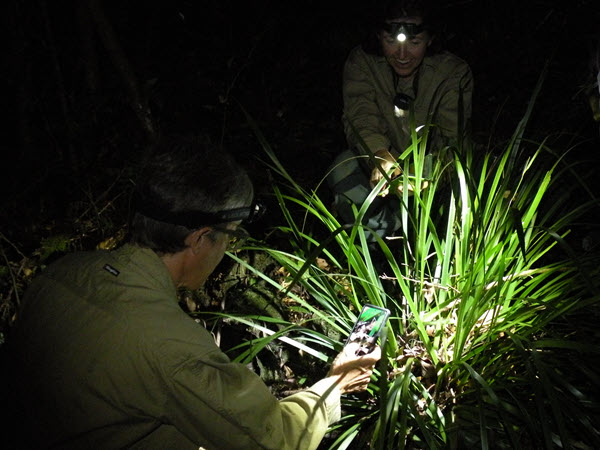February is coming – and so is the ‘army’ of Frog Finders. Join the team!
Frogs are endearing, non-threatening and relatively easy to observe. Many are key indicators of a healthy environment. Therefore, humans could do well to take an interest in this animal group to ensure we know where they are and to keep their populations healthy.
The Find a Frog in February citizen science program is entering its 9th year and has a large community of over 1,800 people from all over the program area (Sunshine Coast, Noosa, Gympie and Fraser Coast council regions) who have been looking for frogs and submitting their observations. The program has been increasing awareness of frogs and their needs, and letting people know how to go about looking for frogs and how to make sure we give frogs the best chance. Until now ‘Froggers’ have sent in 23,400 records of 39 species.
The program area is home to over 45 frog species, 10 of which are listed as threatened or have disappeared – that’s nearly 25%! Frogs are easily affected by changes in the air, water and land. Collecting information on their whereabouts and the habitats they use means we can better manage the environment to protect them into the future. We offer these suggestions to help your local frogs:
- Make your frog observations count – submit your photos and/or call recordings to FFF or a reputable database (see below).
- Monitor one or more sites every year during February.
- Keep some areas ‘messy’ – logs and branches, leaf litter, rock piles, tall grass (a ‘high-rise’ structure provides homes for more beings than a single story dwelling).
- Provide water – ponds, dams, swamps, low areas that fill when it rains, creeks – all with a variety of vegetation, structures and even some bare areas.
- Don’t move eggs, tadpoles or frogs about – this increases the risk of disease spread.
- Keep pollutants out of the environment – chemicals travel easily in water that flows across the land, along drains and through the soil profile. Soap is a frog’s enemy!
- Disinfect your shoes and equipment if moving between water bodies to stop the spread of frog diseases (use 1% bleach solution for 1 minute or dry items out completely).
- Promote the protection of waterways and water quality in your area.
- Consider protecting and reinstating wetlands (billabongs/swamps) that are grazed and/or have been drained or modified.
- Keep your cats indoors at night as they hunt frogs and other wildlife.
- Know the difference between cane toads and native frogs and take care if you are controlling cane toads.
- Act to reverse climate change (see 10 actions at https://www.un.org/en/actnow/ten-actions).
There are 4 ways to send in your observations:
- FFF record sheet at https://mrccc.org.au/frog-in-february/ – complete and send photos in for identification, verification and entry to the Queensland WildNet database.
- Email findafrog@mrccc.org.au with your photos and/or audio recordings for identification and lodgment.
- Join the ‘Find a Frog in February’ project in iNaturalist and submit your photos and recordings of calling frogs.
- Join the ‘Find a Frog in Feb – MRCCC’ group in the FrogID app to submit your call recordings.
For more information go to http://mrccc.org.au/frog-in-february/
Contact a team member: email findafrog@mrccc.org.au or phone (07) 5482 4766
‘Happy frogging’ from the Find a Frog in February Team. We look forward to hearing from you!
Find a Frog in February is proudly supported by the Sunshine Coast Council, Noosa Shire Council, Gympie Regional Council and the Fraser Coast Council, and is delivered by the Mary River Catchment Coordinating Committee.


